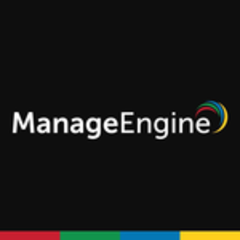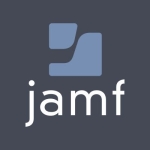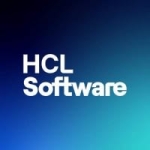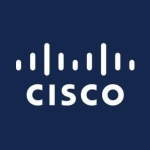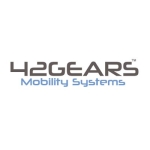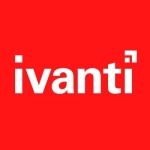What is our primary use case?
We primarily use the solution for managing patches and centralizing updates for applications. We can also blacklist and whitelist applications on our users' laptops.
How has it helped my organization?
Besides the office and operating systems, there are lots of other products that need to be taken care of, which are beyond your control. I have 250 endpoints here, sitting here and 100 roaming users, so for me, each and every application in the current scenario is very difficult, wherein the digital signatures are happening, the tokens are happening, which ask for the updates of Java, which ask for the update of a browser. It is very difficult for me to do the update of every PC individually. However, when handled in a centralized location, I get the control I need so that I can see which endpoint needs to be updated, which endpoint has been updated, et cetera. This is very helpful for me, very good.
What is most valuable?
The solution is very easy to use.
Everything is easily centralized and managed under this one product.
When we do the patching, I can select the applications which are applicable to my network. We will get multiple templates and tons and tons of applications, however, you can select and download and it'll start patching. It'll consume lots of bandwidth and disk space. What you can do, is that, whichever applications are applicable for you, you can select those applications and it will start patching only those applications. It will reduce the bandwidth, it'll reduce the disk space, and tracking will be much easier.
In terms of the warranty, you need to install the agent on the laptop, or desktop and once the agent is installed, when the communication happens, it fetches the entire detail of the hardware, software, and everything. The beautiful thing with that is it gives you the warranty information also, whether the product is out of warranty or not. I can set an alert for devices where the warranty is going to expire. I'll get an alert that it is going to expire in one year, a month, six months, whatever the term I defined.
Since I'm able to see whatever the applications are installed on the user's PC on the endpoint. Sometimes most of the roaming users who are out of my network tend to install applications that are not applicable as per company policy. You can define which applications are allowed. There was a couple of cases where my users had installed a YouTube Downloader, and while downloading and installing that filter, by default or by accident, they installed some of the adware also. That won't happen under this solution.
Desktop Central gives me an option wherein I can prohibit any software. When I blacklist software, the user will get an alert saying "This is prohibited software." Then they call IT and I'll get a notification. For me, I'm very much in control of my network now. I have the power of whitelisting or blacklisting.
For users that work from home and are not in the office, sometimes minor things happen, such as email not working properly, et cetera. Desktop Central will give me remote control of a user's machine and I can troubleshoot or find out what the issue might be. If something needs to be installed, I can do it remotely as well. I don't need to buy TeamViewer or AnyDesk or other software.
There are so many features available to us. They've added a lot over time. Initially, the asset management was there, however, there were no warranty features. The remote control was there, however, there were various limitations. They've just gotten better and more robust over time.
What needs improvement?
For the most part, all of my needs are met with this product.
I would like to see them come out with a SaaS version of the product in the future. There are dependencies with on-prem. For example, since it's on my data center, my bandwidth, it is totally dependent on my network. On the cloud, I don't have to worry about anything.
One feature we're testing is when we have a laptop with just a DOS OS and we need to do a full installation, including installing the underlying OS. I'd like to have the option where we could create a template to allow the system to install the OS with the typical software. It's a feature we're testing now to see if this is possible. We don't use it yet. However, I'd like it if we could just run one script, one command, and then get an alert when the process is done so that I can go in and configure emails or whatever else I need so that it is ready for the end-user.
For how long have I used the solution?
I've been working with the solution for around three years.
What do I think about the stability of the solution?
The stability is very good. We have been using it for the last three to four years and there is not a single downtime where the product has failed. In terms of service updates, service backups, and whatever the features are coming, we have faced a 99.9% success ratio.
In the initial stage, at that time, we had a hybrid environment internally, where we had Windows 7, Windows 8, Windows 10, and some of the servers which had Windows 2003 OS. There were compatibility issues, however, we've since migrated and upgraded the systems and there is no longer an issue.
What do I think about the scalability of the solution?
The solution is scalable.
We are using the solution quite extensively and have about 250 users.
How are customer service and support?
Technical support has been good and we've been satisfied with their level of service. They have a good inbuilt chat option if you need to reach them. They have a technical team right within the solution that you can talk to in real-time. They can provide workarounds or escalate issues quite easily.
Which solution did I use previously and why did I switch?
We used to have a Windows SUS server for patch management. There were other products that needed to be taken care of - for example, Adobe, the WinRAR, and multiple other software, which needed to be patched, and in which the assets needed to be managed. There are things such as warranties that need to be managed, and their tracking needs to be done, we were looking for an application wherein we would get everything on a centralized product, which is why we chose this solution.
How was the initial setup?
The initial setup was straightforward. At the time, when we were in the phase of testing for the product, we did whatever testing to fulfill our requirements. That way, when we went into production, there were not any hiccups.
Deployment took around ten to 15 days, due to the number of endpoints that needed to be done, and the number of products that needed to be whitelisted. Also, everything needed to be configured. Around four to five people were involved in that project.
In terms of maintenance, if there is any product update, or if the application will have any service package coming, then I need to take downtime, to go through everything and do testing of the service pack to see whether it will hamper any current writing process or not. Once I do it in the test environment, then I have to put it in production.
That said, once we move to SaaS, this process will be obsolete in the cloud.
I have two dedicated resources for maintenance. That includes me. The other person looks at the patch management and the warranties. I look at server maintenance and deal with whatever resources are required for servers.
What about the implementation team?
We were able to set it up ourselves in-house.
What's my experience with pricing, setup cost, and licensing?
At the time we signed onto this product, it was a bit more expensive than SolarWinds, however, I'm not sure if that's since changed.
Which other solutions did I evaluate?
We looked at SolarWinds, however, we went for the Desktop Central. We evaluated it and we found Desktop Central was quite user-friendly in terms of patch management and in terms of asset management. Right from the user inception, until the exit, everything is tracked under Desktop Central, whatever the asset allocated to the user, whatever the warranty, whatever the application, the install, everything is tracked under the Desktop Central.
Kaseya was also evaluated which was on the cloud. However, it was costlier and there were manageability issues. SolarWinds was a bit very complex in terms of handling. Technical support was also different as they only have an email option.
What other advice do I have?
I'm a customer and an end-user.
Currently, we are using on-prem. I am waiting for SaaS, however, I really don't have the SaaS version. It'll be very good if they offer a SaaS version; my manageability will become very much easier.
If you're looking for third-party patch management, asset management, and/or remote control support, then this is the best app. For remote control, it doesn't require much bandwidth. Often, people sitting in a remote location are using their 3G data cards or mobile data, mobile phone, and they still got connected with the seamless connectivity. There has been no issue.
I'd rate the solution at an eight out of ten.
Which deployment model are you using for this solution?
On-premises
Disclosure: My company does not have a business relationship with this vendor other than being a customer.

